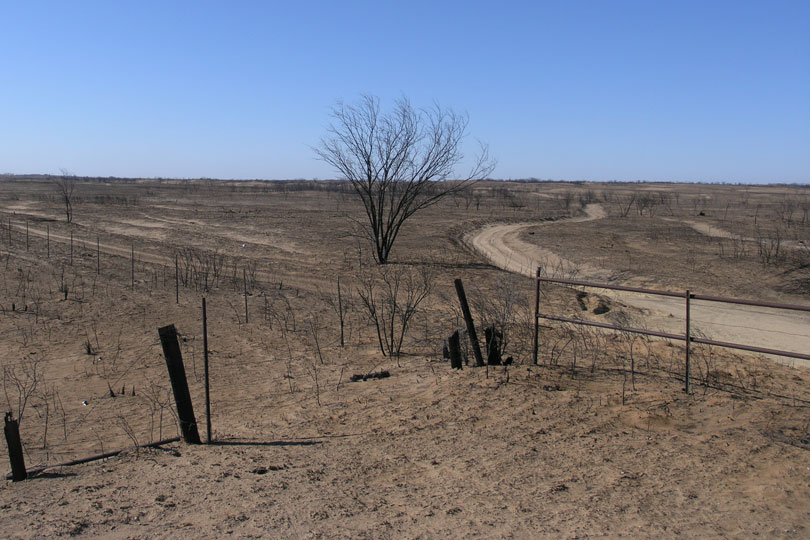By Justin Walker
Communications Specialist
Wildfire season has started early this year, as drought and environmental conditions have sparked several blazes across the Lone Star State.
Dr. Andy Vestal, AgriLife Extension director for emergency management at Texas A&M University, said wildfire season normally begins in March, lasting through April and May during spring green-up. Potential for fires are increased during this time due to dead grasses, winds and warm, dry conditions.
“These conditions arrived about a month ahead of schedule and could mean the wildfire season could extend to 90, possibly 100, days before the typical green-up,” Vestal told AgriLife Today.
The current conditions were brought on by wetter conditions early in 2017 followed by drought.
Vestal noted the Energy Release Component (ERC) is at critical levels in parts of the state. ERC measures how hot and long available fuel, such as trees, underbrush and dry grassy fields, can burn if sparked. High winds, low relative humidity and other environmental factors help raise conditions.
“Grasslands that have not been regularly grazed or managed have enough fuel to create high ERCs, and that is the threat,” Vestal said. “You add high winds like we’ve been seeing into the equation and you have the threat of a serious fire that could be extremely difficult to control.”
According to Vestal, most of the state west of Interstate 35 is at a critical point, due to existing fuel, dry conditions and high winds. With no change to current weather patterns, he believes this could be a difficult wildfire season.
“Environmental conditions at this point of the winter could make for a long fire season,” Vestal said.
The U.S. Drought Monitor continues to show drought conditions worsening, according to State Climatologist Dr. John Nielsen-Gammon.
“The long-term outlook continues to call for below-normal precipitation and above-normal temperatures,” Nielsen-Gammon said.
Roughly 85.5 percent of the state is “abnormally dry,” according to the drought monitor. Almost 20 percent of Texas is under severe or extreme drought conditions—specifically in the Panhandle and a portion of Central Texas.
Motley County recently experienced a fire that burned almost 6,000 acres. North Texas experienced nine separate wildfires just days prior, burning almost 2,700 acres.
“It’s amazing to think we have a season named after such potentially devastating events, but we have historical data that tells us it happens,” Vestal said. “This year, it’s happening earlier than usual, and our producers and the public need to be mindful about the dangers and take precautions to prevent catastrophe.”

